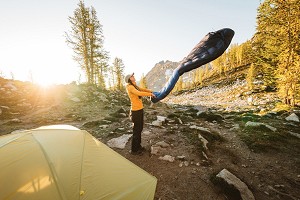
Earlier this year Mountain Equipment released their new and improved sleeping bag range, with virtually every bag in their collection re-designed for 2017. One of these, the winter-worthy Xeros, was reviewed by our own Martin McKenna back in April (click here to see it). Martin is made of sterner stuff than I these days - plus he's based north of the border, so used to colder climes too. No... the sleeping bag I was looking for was a very different beast: less for extreme cold than for general all-round use throughout spring, summer and autumn. With a trip to Tasmania in the offing, the Helium 250 looked to fit the bill both for myself and Penny, my climbing partner and girlfriend.
In Tazzie we knew we'd be in for a bit of everything, from van camping or dossing on people's floors, all the way through to bivvying out under the stars. We also knew about Tasmania's reputation for unpredictable weather, which can be rain, snow or shine pretty much year round. Clearly we needed a bag for all of these less-extreme eventualities. Since then we've gone on to use the Helium 250 all over the UK, and after about six month's pretty solid use we feel qualified to comment.
Much like Martin, when considering a new sleeping bag I look first at its temperature rating. After this, other factors such as weight and fill power come into play, but if the temperature isn't what you're after then it probably won't be the right bag for you, and one thing is for sure - Mountain Equipment bags certainly have a plethora of ratings!. The Helium 250's are:
Confused? I certainly was… So if you've got the time it's worth checking out the following article by Mountain Equipment's very own Dr. Down, Matthew Fuller. However, to summarise, here's a sweeping generalisation:
Comfort Limit: where a 'standard man' with curled up posture is just not feeling cold. If you're an average bloke this is the number that you should perhaps pay the most attention to, and it is the number which most shops and brands make the biggest deal out of.
Extreme: this is where risk of health damage to a 'standard woman' by hypothermia occurs. This one can basically be ignored unless you have a masochistic bent.
Good Night's Sleep Temperature: this brand-specific temperature rating provides an indication as to the minimum temperature that Mountain Equipment feel the bag should be comfortable to, for an experienced user. It's a figure based on real world use more than the lab tests that form the basis of the standard industry ratings.
Depending on whether you're male or female, a warm sleeper or a cold sleeper, you're probably looking at somewhere between the Comfort, Comfort Limit and the Good Night's Sleep Rating. From experience I'd probably say that I was somewhere between Comfort and Comfort Limit, as I'm not the warmest of sleepers and don't have an abundance of 'spare' to keep me warm. Either way, temperature-wise I would say the bag was spot on not only for the ratings, but exactly what we were using it for.
When it comes to weight, the bag itself comes in at 705g, which for the warmth it offers is very respectable. I'll say more about this below.
Fit and Features
Mountain Equipment's re-design has supposedly cut the weight by up to 30%, but increased the thermal performance by up to 5 degrees. How was this achieved? Fit, Features, and Materials - all of which I'll cover now.
Much like all bags in their range, the Helium 250 comes in a myriad of options - Right and Left Zip, Regular, XL, or Women's. As such you can get the right bag for you. In my case, being around the 6ft mark and right handed, I had the Regular + Left Zip option (you reach across your body, hence if you're right handed you tend to go for a zip on the left hand side). Getting a bag that's too big is thermally inefficient and getting a bag that is too small is…well…
The fit of the bag is what's described as 'Alpine', which I'd originally take to mean mummy style (only it sounds way better), but when comparing it to the fit of their previous sleeping bag range the actual difference becomes noticeable: they're much more fitted around the body. To clarify, that isn't to say they're tight, it's just to say that looking back at my old Mountain Equipment Xero 400 sleeping bag, it now feels - if anything - a little baggy. So whilst it took a bit of investigation to notice just how much the fit had been tailored, turns out it had indeed been tailored - a detail that would actually be quite easy to miss because it is such a subtle improvement. Yet it certainly keeps the weight down and the warmth up.
The fit goes one step further courtesy of a few neat features, most notably the toe box, which has been further developed from Mountain Equipment's signature Shark's Toe construction, but with significantly less stitching and material than had surrounded it previously. Another example of such steamlining can be found in the elasticated stitching that has become synonymous with all Mountain Equipment bags, which now exclusively appears on the women's bag. The reason for this is because elastication on the outside compresses the down, which is bad because what you actually want is to give the down the freedom to loft. Once you put these aspects together you rapidly begin to understand how they have achieved such thermal performance at a minimalist 705g (men's size regular; the women's version is only 675g).
When it comes to baffles, a slanted box-wall construction has been used on the top and stitch-through on the bottom; the former cutting out the cold spots where it's most needed, the latter cutting out the weight where it's least needed.
According to ME's Matthew Fuller, "This was done because the down density is greater underneath to reduce down migration under a sleeper and it keeps weight down. Despite moving to stitch through it's twice as warm in the manikin test than the old one."
This isn't the only area where efficiencies have been made either, as the quantity of down in each baffle has been scrutinised through testing in the Leeds University cold chamber. As a result there's more down where you need it, and less where you don't. The baffles are actually markedly bigger than in their old bags too, another sign of refinement.
The big question for me was was, are all these tweaks actually noticeable in use? Well, the proof is in the pudding: the size is right, the weight is right, the performance is spot on, and as if that weren't enough it's a damn comfortable bag to sleep in too. That said it, many of the design features are incredibly subtle, or simply go unnoticed because they're pleasantly intuitive. I really had to go hunting for them in order to find where some of the savings had been made. The devil is very much in the detail in this bag.
Whilst I don't wish to turn this into a list of features (something this review is in danger of becoming already), I figured I'd finish with my final three favourites:
- The Lode Locker magnetic button: keeps the bag together in/around the shoulders whilst you're cooking, reading, or doing anything other than sleeping. If you stick one of your arms out the side you can keep the bag done up almost all the way too.
- The stuff sack: it's simple, elegant, light and really easy to use; being a little bigger, thus easy to stuff the bag into, and having a hole to let the air out makes it far easier to compress too. I love it!
- The storage 'cube': a more glamous version of the classic pillow case design, makes for easier storage on shelves, and looks like something out of a science fiction movie
Materials
The fabric used outside is Mountain Equipment's very own Helium 20 fabric - a light, breathable, and high loft fabric with a luxurious feel. The inner however is their Supersoft fabric, which is one of the most important factors in the bag's comfort: it's divine! Whilst there is a bit of DWR to the bag, it's definitely not weatherproof. Still, this makes it perfectly suitable for use in damp climates (i.e. the UK!) providing you're careful.
When it comes to fill, there's 254g of 90-10 Pure Duck Down, with a minimum fill power of 700. I for one was interested in why duck down, as opposed to goose down, and the reason for this is because when it comes to down of this level of quality there is actually very little difference between goose down and duck down - there is however a terrific difference in price.
Because the Helium bags are designed as all-rounders for less extreme 3-season conditions, they arguably don't require the very highest grade of down. The 250 bag is £200, which while an appreciable investment does seem very reasonabe for a bag of this quality. Adding more expensive goose down into the mix would undoubtedly have had a major knock on effect on the price.
Mens vs. Womens
The more observent individuals out there will have noticed that there is a 2°C difference between the Men's and Women's Comtortable Night Sleep Rating. This is because women, on average, sleep colder than men. The Women's bag is a little shorter, and hence contains a little less down, so coming in at a lighter weight. The women's version is available in both a Regular and XL versions, so irrespective of your height there should be something to suit your needs. The bag has all the same features as the Men's model, but with a different down distribution and fit.
Summary
If there were a single soundbite to summarise the Helium 250 it would be that it was an exceptionally comfortable bag to sleep in and a pleasure to use. The construction oozes quality, the temperature rating is realistic (once you get your head around what the ratings actually mean), the down is from an ethical source, and the weight is actually quite remarkable - all the more so considering this isn't even their top of the range model! Price-wise, £200 seems fair, especially considering how long it's going to last. Yes it's a major purchase, but you could consider it an investment on years of comfy nights.
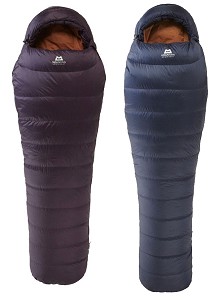
Weighing less than most bottles of water and packing down equally small, this is the perfect bag for the dedicated warm weather backpacker.
- Price: £200
- Total weight: 705g (size Reg, men's); 675g (women's)
- HELIUM™ 20 outer shell is very light and highly breathable
- 243g of 90-10 Pure Duck Down with a minimum fill power of 700
- Alpine fit with zoned EXL® system maximises thermal efficiency (Women's model only)
- Slanted Box-Wall baffles and Stitch-Through baffles
- Mid-level side seams
- 5 baffle anatomically shaped hood
- 4 baffle anatomically shaped and offset foot-box
- Full length Gemini™ zip baffle and integrated collar with Lode Lock™ closure
- Supplied with waterproof roll-top stuff-sack and storage cube
For more info see mountain-equipment.co.uk
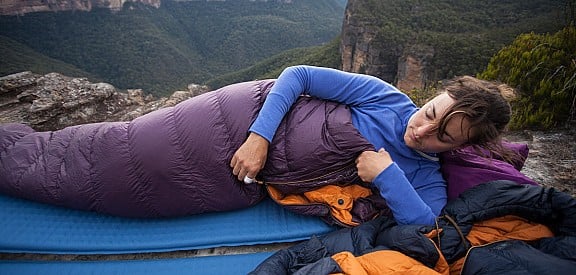


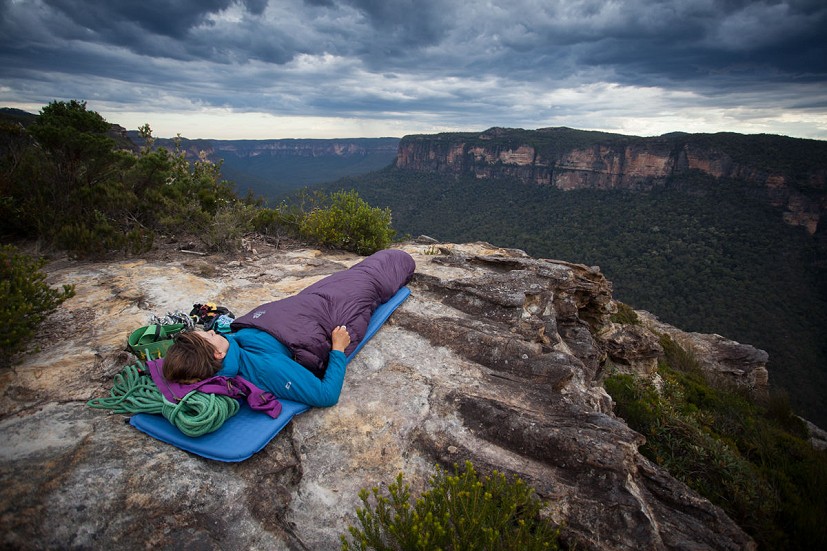
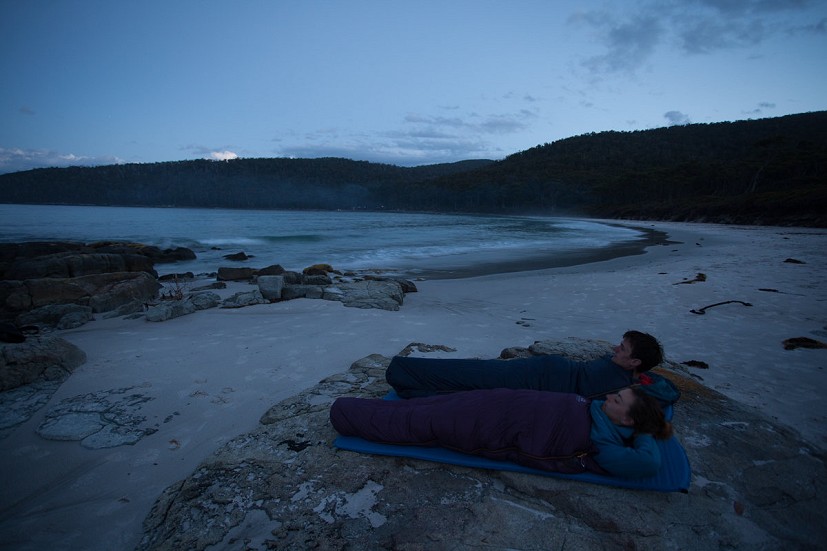
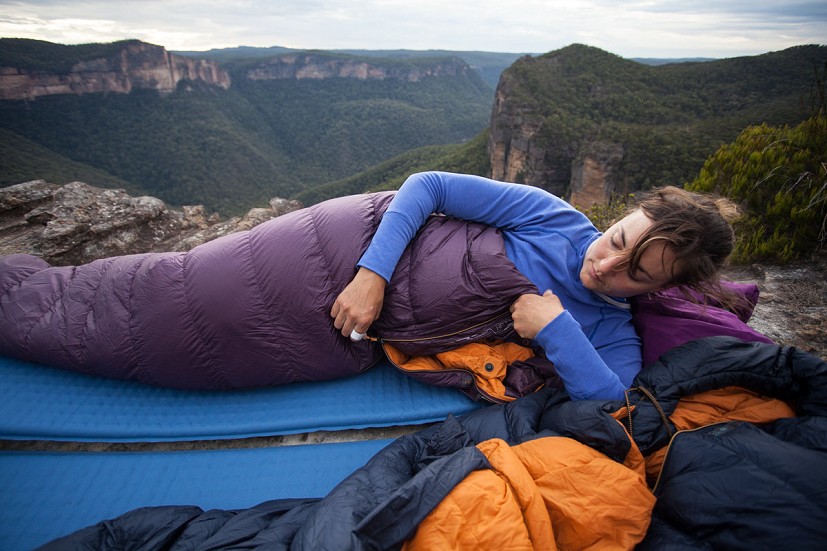
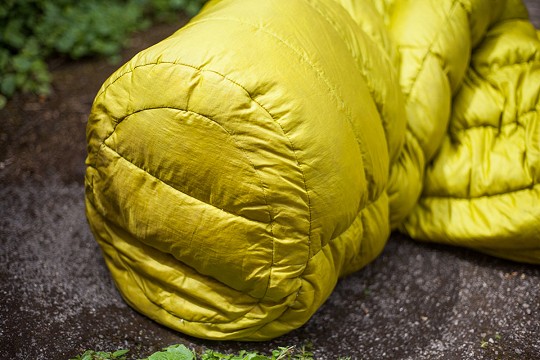
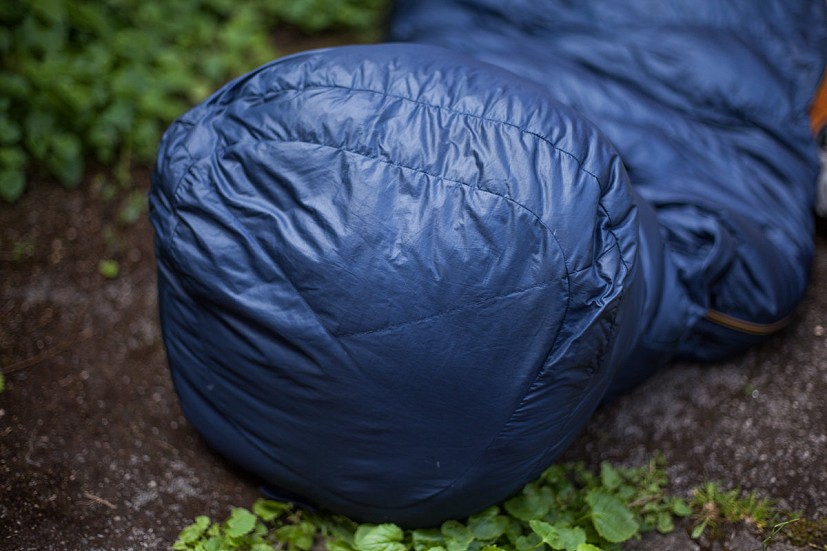



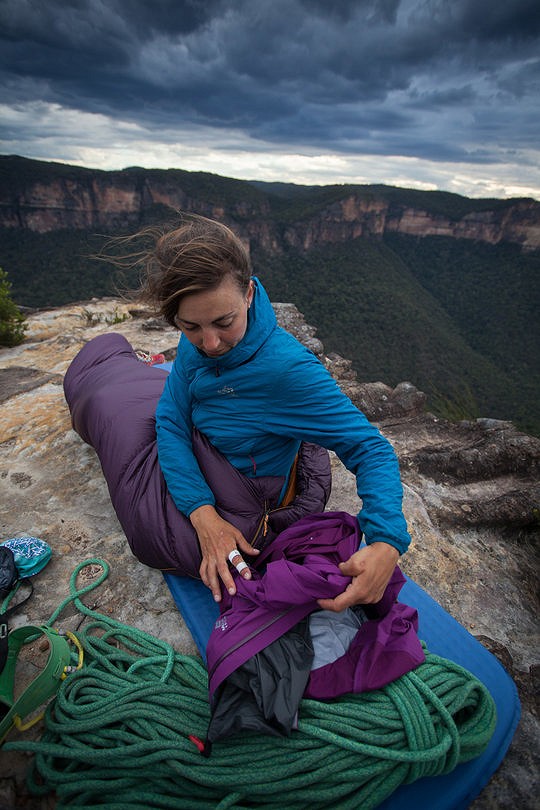
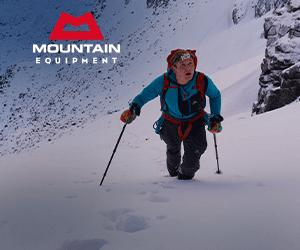
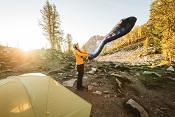
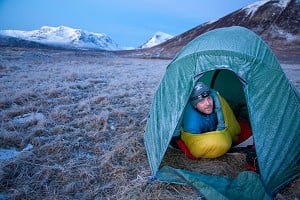

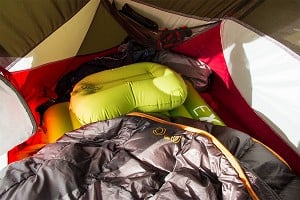
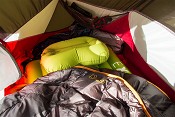
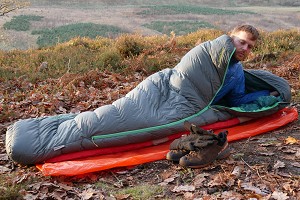
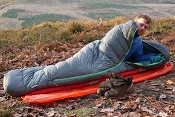
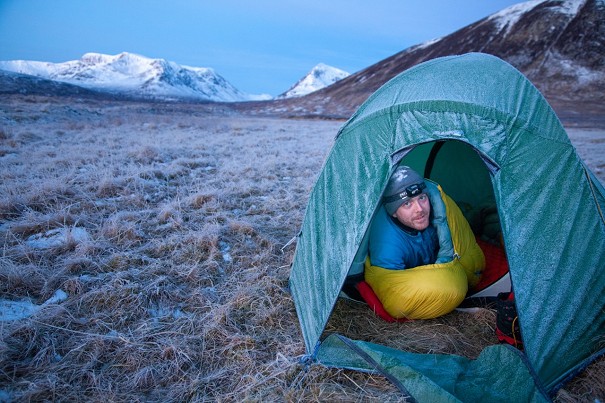

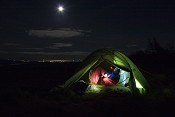
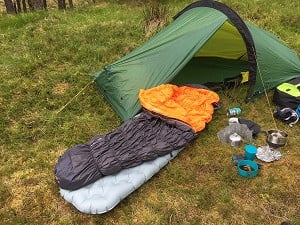

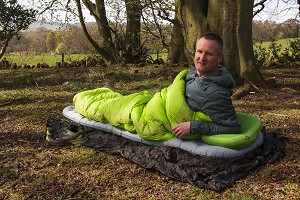
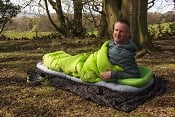

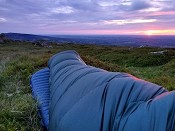


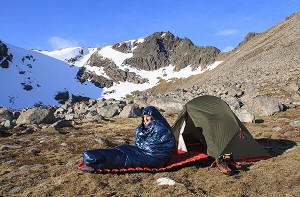

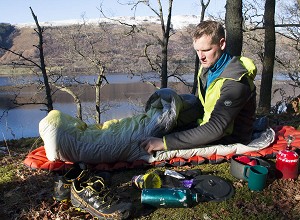



Comments